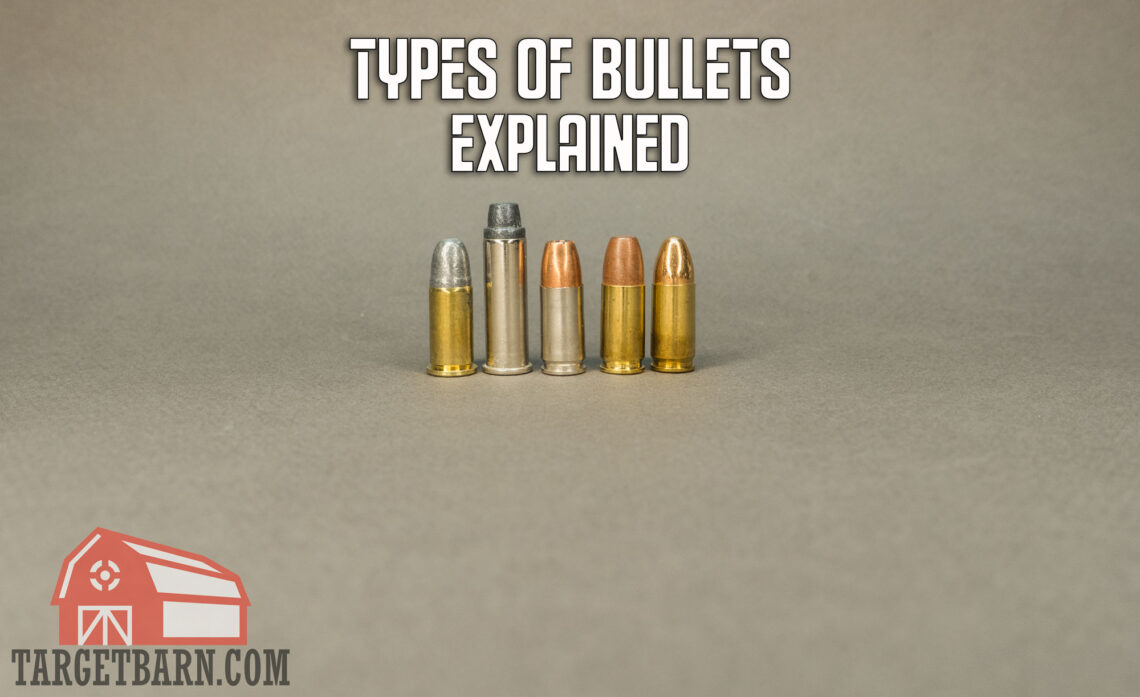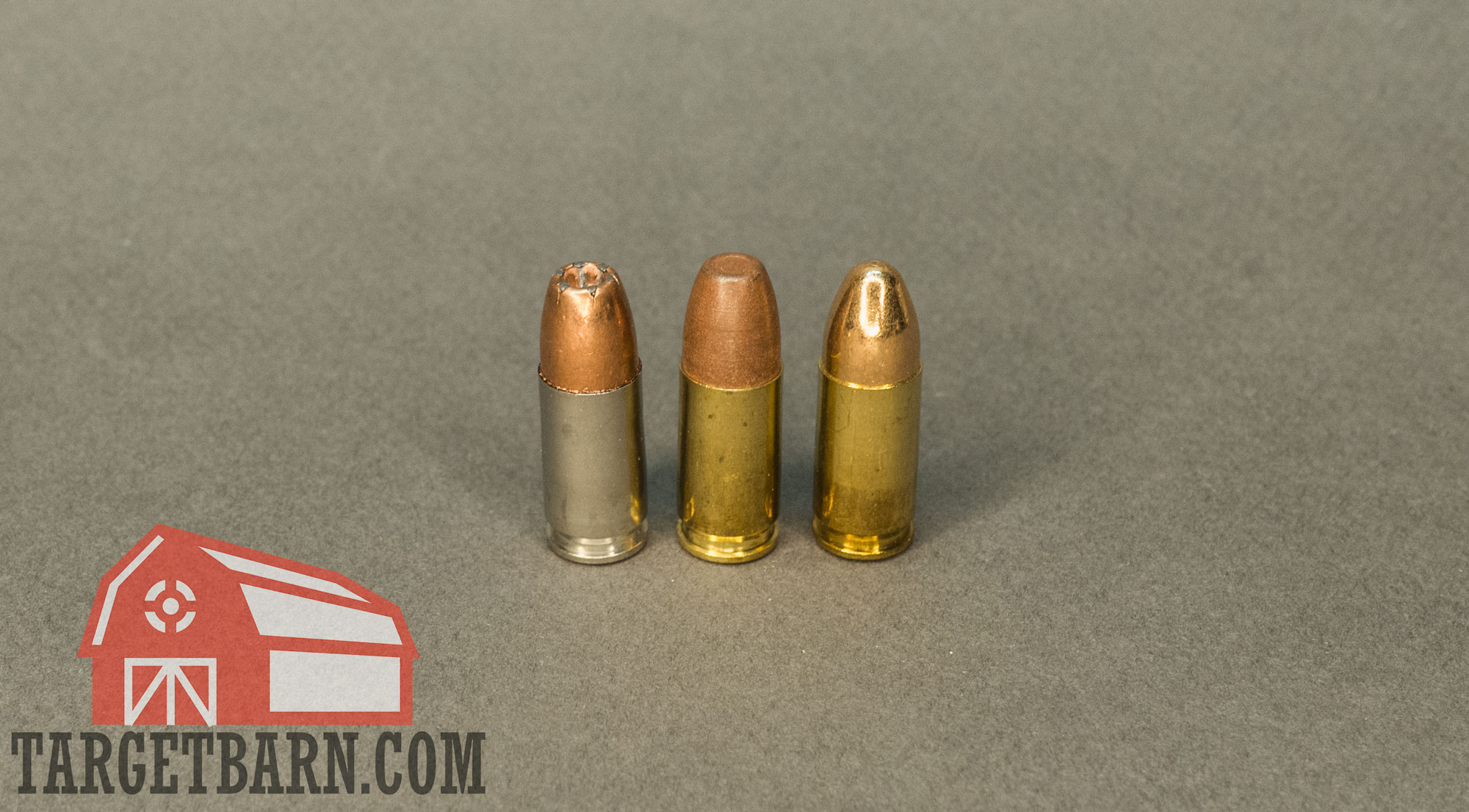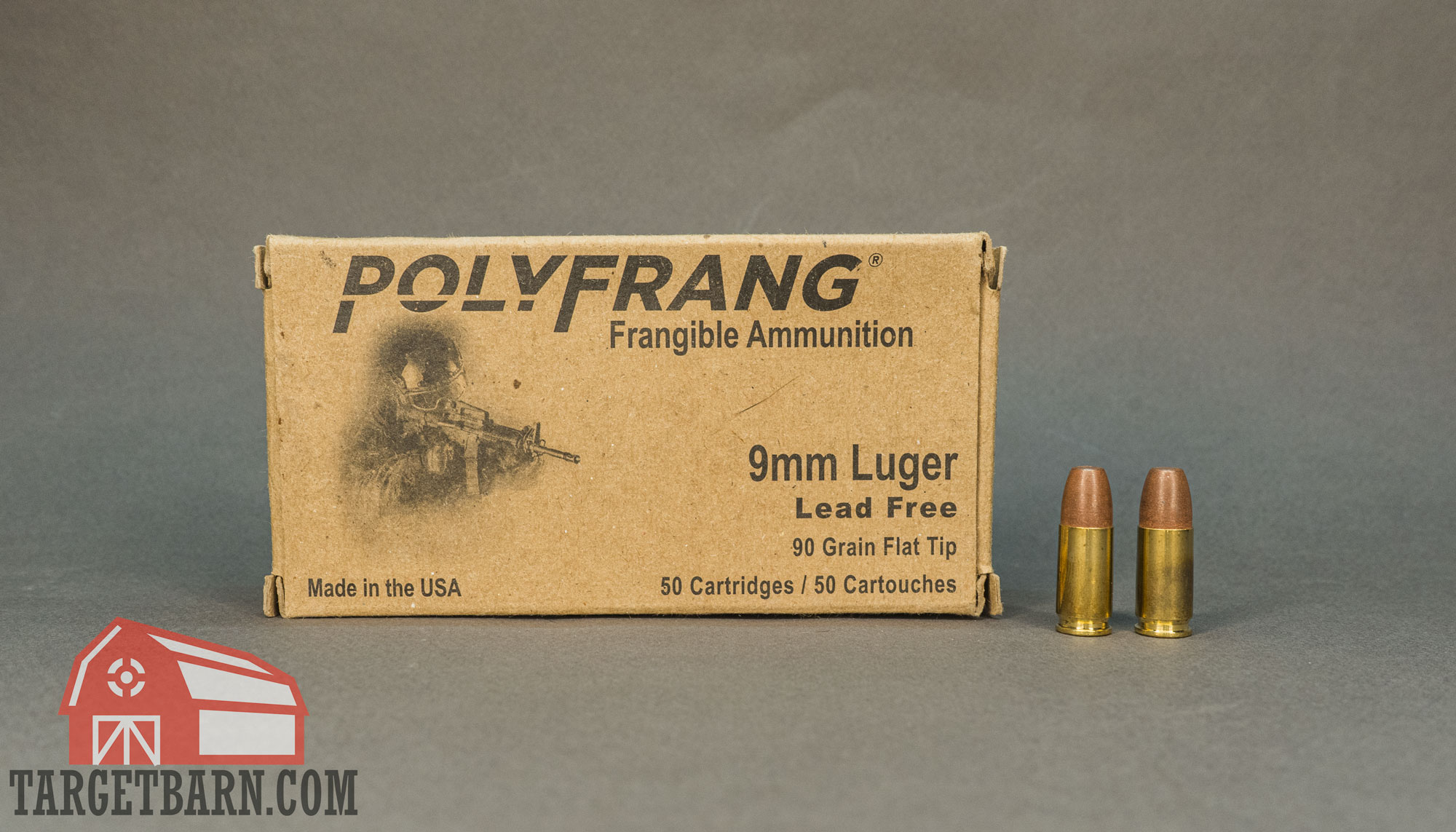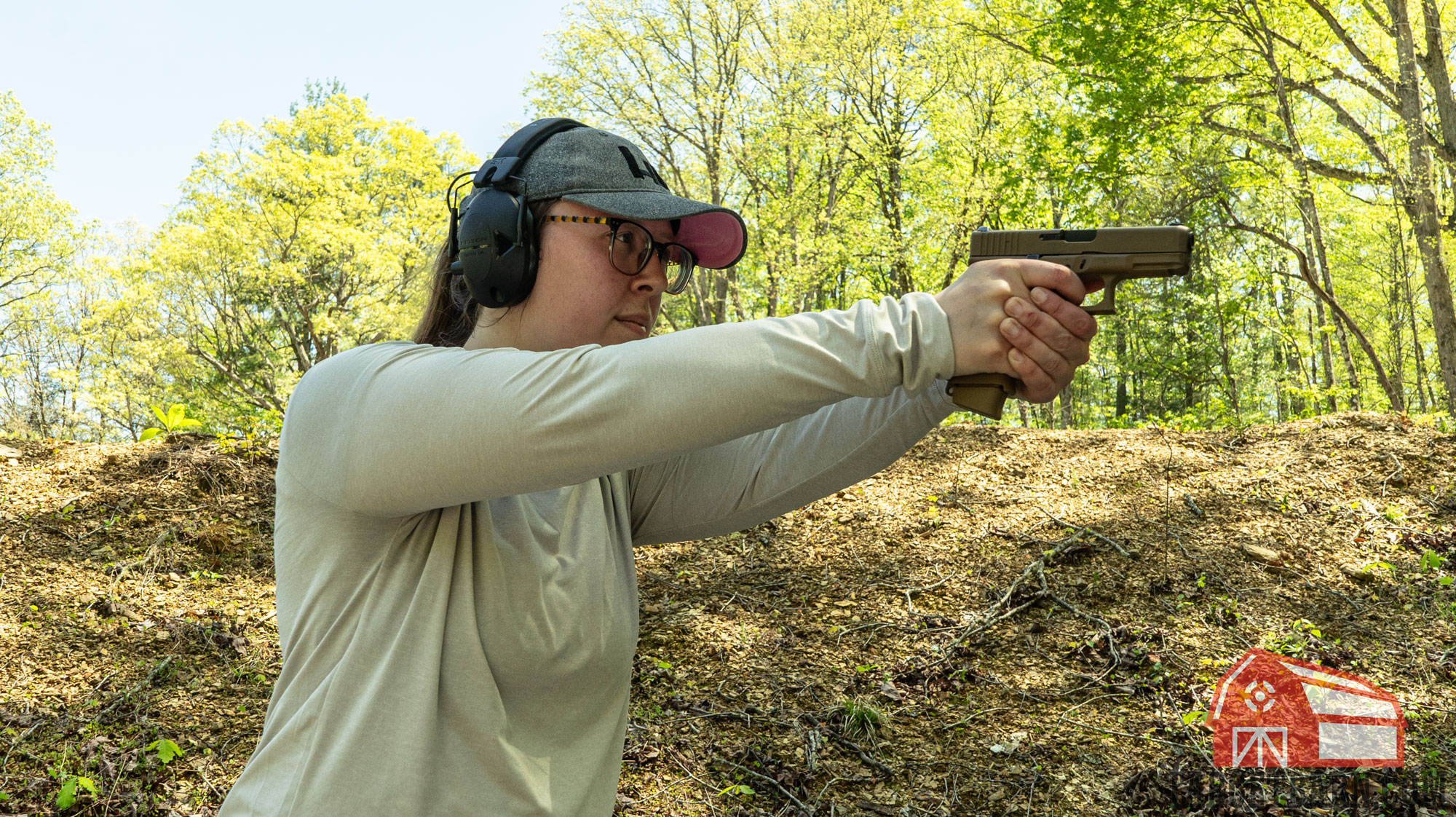When it comes to buying ammo, there are several types of bullets to choose from. For newer shooters, it can get confusing trying to figure out the right type of ammo you need.
Today I’ll run through the main types of bullets and what they are best used for.
Types of Bullets
Before we jump into the different types of bullets, it may help to understand the basic parts of ammunition. We’ll be looking specifically at bullets, which are the projectile that travels through your gun’s barrel to the target.
Full Metal Jacket (FMJ)
Use type: range training
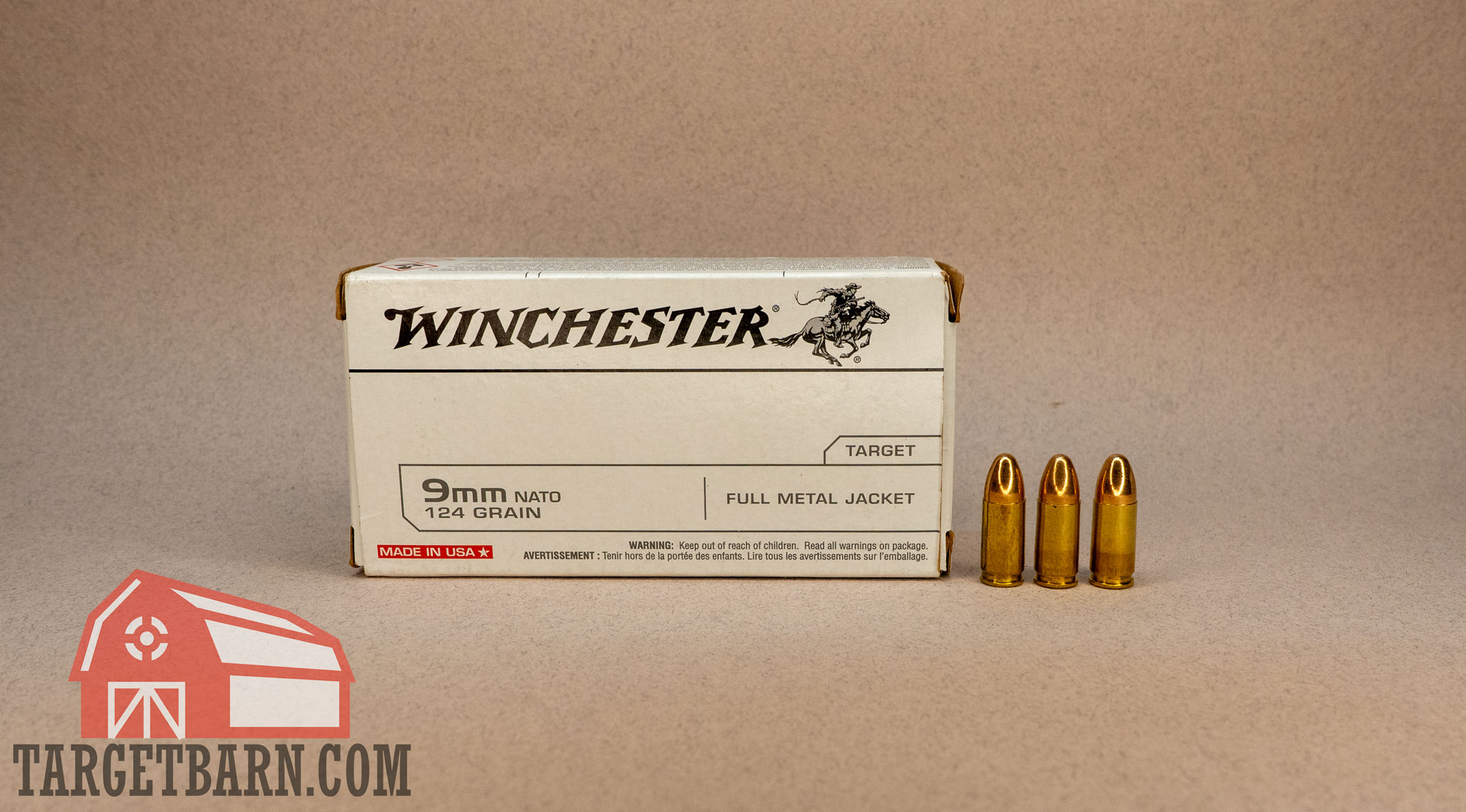
Full metal jacket bullets consist of a soft lead core and a harder metal jacket that surrounds it, typically made of copper. The jacket covers the exposed part of the bullet, but may lead the lead base exposed inside the bullet’s casing.
These bullets are most popular for high round count shooting that is not self defense or hunting. If you’re just heading to the range, full metal jacket rounds will likely be the most affordable and easy to find choice.
Learn more: Full Metal Jacket Bullets Explained
Some variations of the FMJ bullet include:
Truncated Cone (FMJ-TC) – A full metal jacket truncated cone bullet has the same characteristic of an FMJ round, only the bullet is shaped like a cone, but with a flat tip that runs parallel to the bullet’s base. Because of their flat nose, they leave clean holes in paper targets, which can be an advantage to some shooters.
Flat Nose (FMJ-FN) – The full metal jacket flat nose (FMJ-FN) bullet is similar to the truncated cone, but with a larger flat tip. Again, these bullets are great for accurately scoring hits on paper targets.
Hollow Point (HP)
Use type: self defense

Hollow point bullets are the top choice for self defense for most calibers. The design of the hollow point allows the bullet to expand when it penetrates an attacker. That’s because one of the things a bullet needs to do to stop an attacker is damage tissue, creating a wide wound channel.
As the name implies, most hollow point bullets will have a hollowed out center tip. When a hollow point impacts a soft tissue target, it should mushroom out.
Because of their special design, hollow point bullets tend to be more expensive than your standard FMJ round.
There are several different variations of hollow point bullets. You will also find ammo manufacturers that give their hollow point bullets a unique name, such as Hornady’s FTX bullet.
Jacketed Hollow Point (JHP)
A jacket, typically made of copper, completely covers the bullet’s soft lead core. The jacket can aid in reliably feeding ammo in semi-auto guns.
Learn more: Jacketed Hollow Point Bullets Explained
Semi-Jacketed Hollow Point (SJHP)
Unlike in jacketed hollow points, the jacket does not cover the entire bullet. Instead, it only partially covers the bullet, leaving the bullet’s lead tip exposed. This can allow for better expansion of the hollow point and is common in revolver ammo.
Boat Tail Bullets
Use type: range training, competition, hunting

Boat tail bullets have a tapered base – the part that sits inside the bullet casing. This design decreased the amount of drag that can slow it down in flight, allowing for a flatter trajectory. You’re likely to only find boat tails on rifle bullets.
Boat tail bullets are commonly included on FMJ bullets, signified as FMJ-BT. You’ll also find boat tail bullets on hollow points (HPBT) and open tip match (OTM) bullets.
Learn more: Boat Tail Bullets Explained
Total Metal Jacket (TMJ)
Use type: range training, indoor range
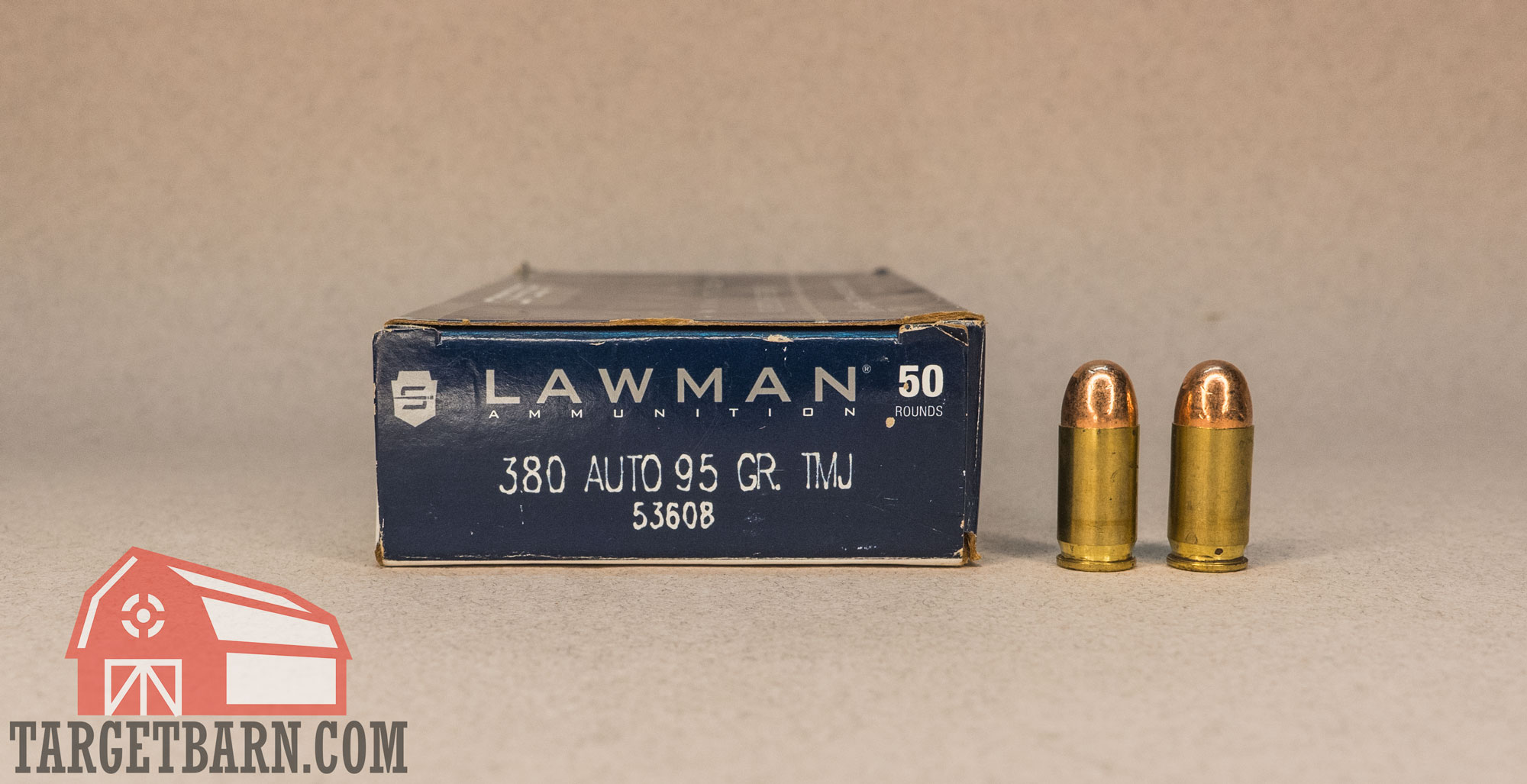
A total metal jacket round is fully encapsulated by a jacket. Full metal jacket bullets have a jacket that covers the exposed portion of the bullet, but the lead base – the part that sits in the casing – is exposed. Because the TMJ’s entire lead bullet is covered with a jacket, it has the advantage of less vaporized lead in the air, making it great for indoor shooting.
Lead Round Nose (LRN)
Use type: range training
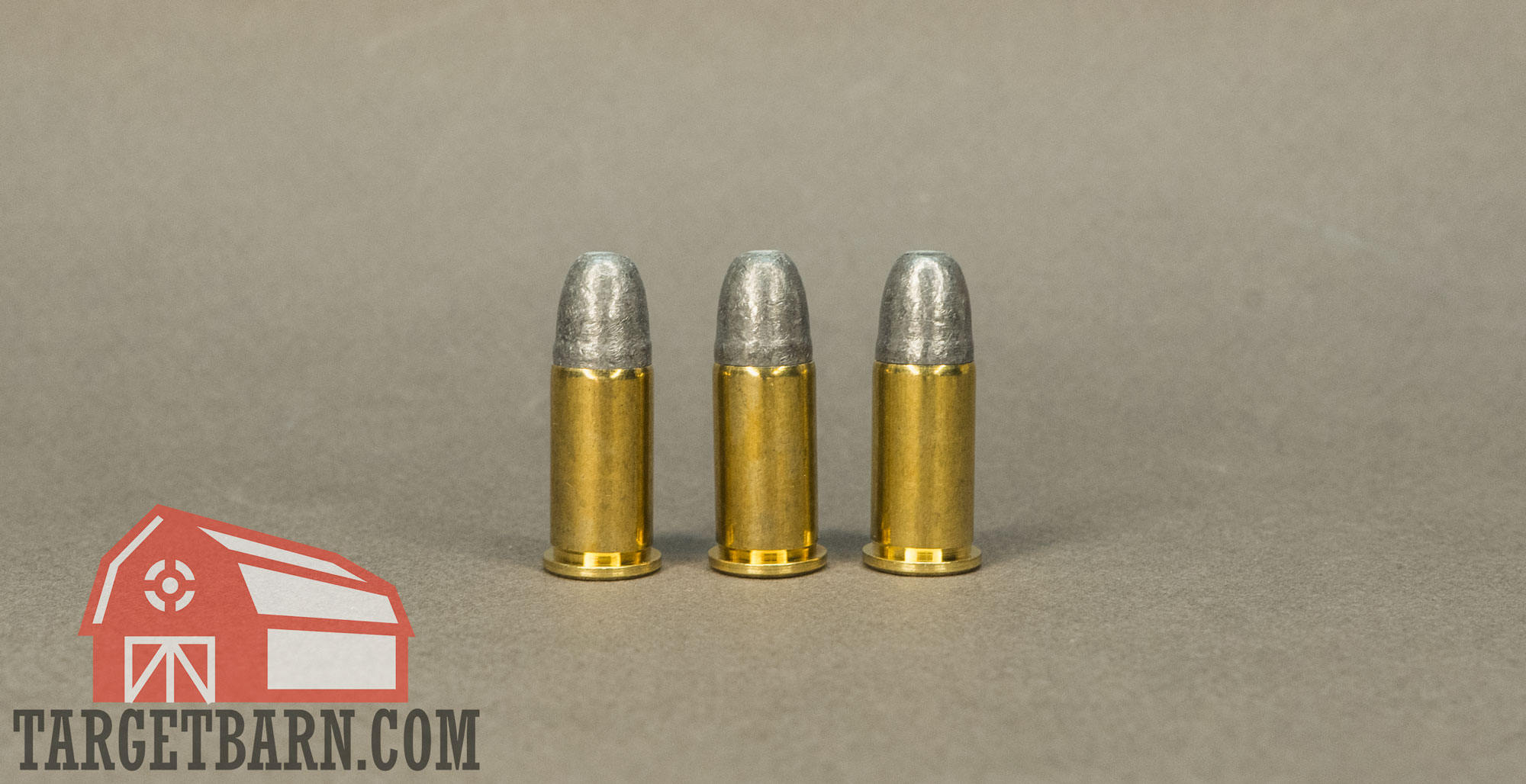
The lead round nose (LRN) bullet is essentially an FMJ bullet without the jacket. As the name implies, it is made of lead and has a rounded nose. Because the LRN bullet doesn’t have a jacket, it doesn’t function well in semi-auto guns, making it best suited for revolvers and lever actions.
Learn more: Lead Round Nose Bullets Explained
Soft Point (SP)
Use type: range training, self defense, hunting
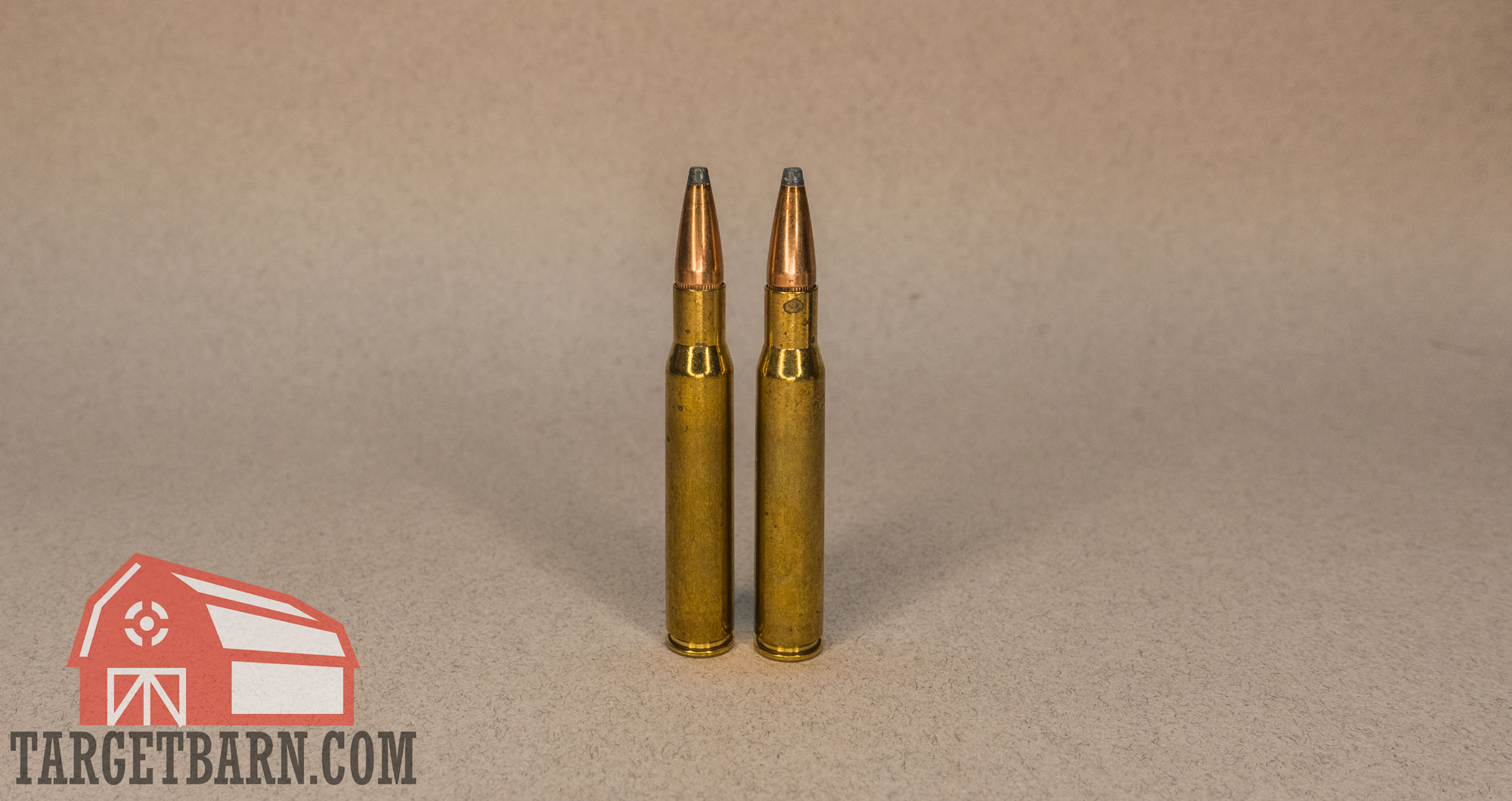
Soft point bullets are almost completely jacketed, but with an exposed soft lead nose. The round often shares the same profile of a standard FMJ bullet. However, unlike the FMJ bullet, it expands and inflicts greater damage on soft tissue. That’s why they’re commonly used for self defense and hunting.
Learn more: Soft Point Bullets Explained
Wadcutter (WC)
Use type: range training, self defense
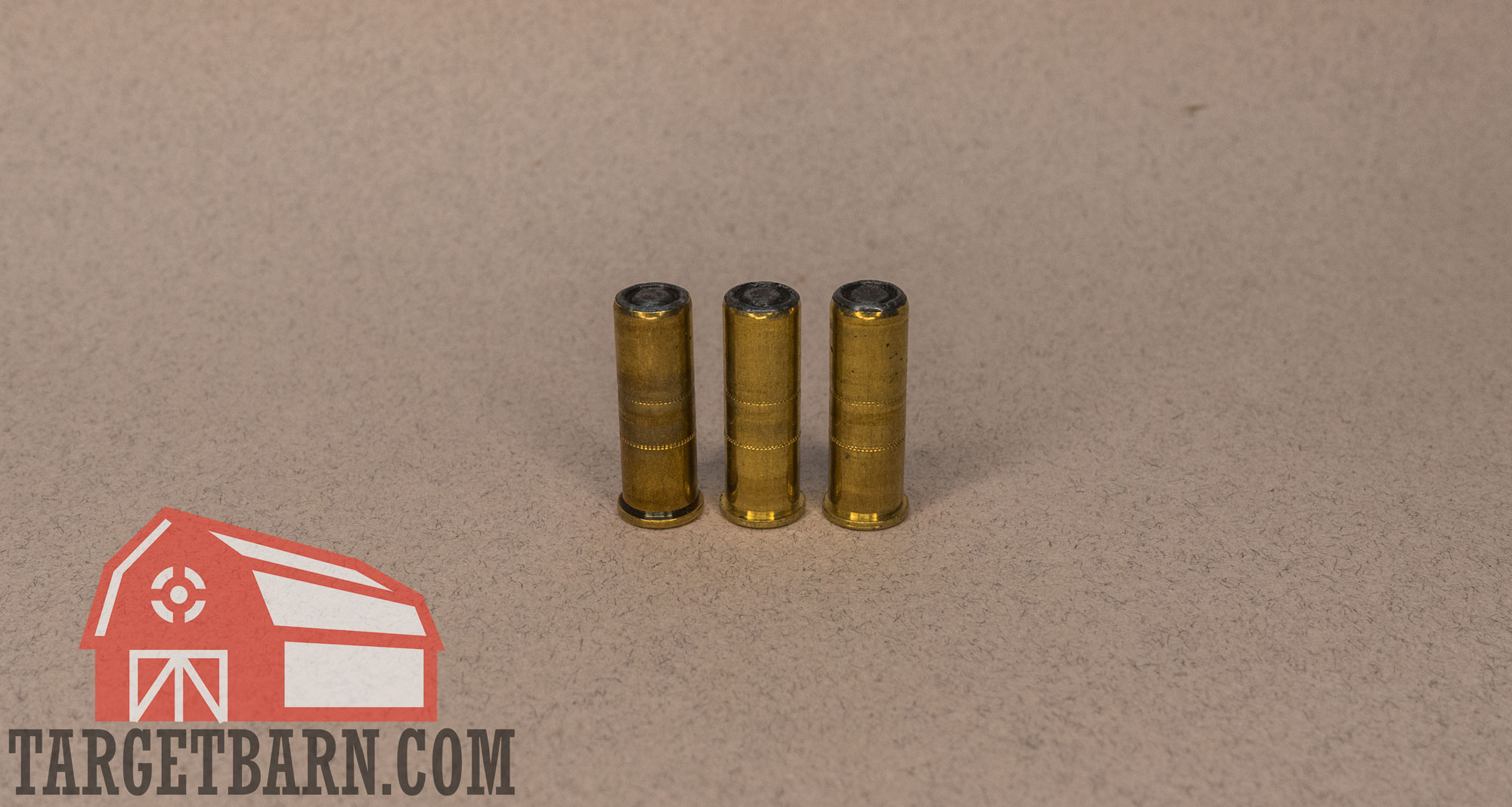
A wadcutter is a pistol round with a completely flat face. The flat nose of the bullet sits flush with the case mouth.
Wadcutters make clean, easy to score holes in paper targets. They also work great as a self defense round for snub nose revolvers.
Some variations of wadcutters include:
Semi-Wadcutter (SWC) – Look similar to flat nose bullets. Provide a little more accuracy at longer distances over traditional wadcutters.
Semi-Wadcutter Hollow Point (SWCHP) – A SWC but with a hollow point tip. SWCHP provide immediate expansion upon impact of a target.
Hollow Back Wadcutter (HBWC) – Like an upside down hollow point. Theoretically has more stability during flight, resulting in better accuracy.
Double-Ended Wadcutter (DEWC) – Both ends of the bullet are the same flat shape.
Bevel Base Wadcutter (BBWC) – The base of the bullet slopes inward, making it easier to place in the casing.
Frangible Ammo
Use type: range training, self defense
Frangible ammo uses a lead free projectile that is designed to shatter or disintegrate upon hitting a hard surface like a steel target. It is made out of a sintered compound primarily of copper, tin, and other metals.
While certainly not safe to shoot at people, frangible training ammo is a good choice for shooting steel targets. That’s because traditional FMJ rounds may throw dangerous bullet fragments back at the shooter when shooting steel at close distances. Frangible rounds will simply disintegrate upon hitting the hard surface, not giving any splash back.
Learn more: Frangible Ammo Explained
Total Synthetic Jacket (TSJ)
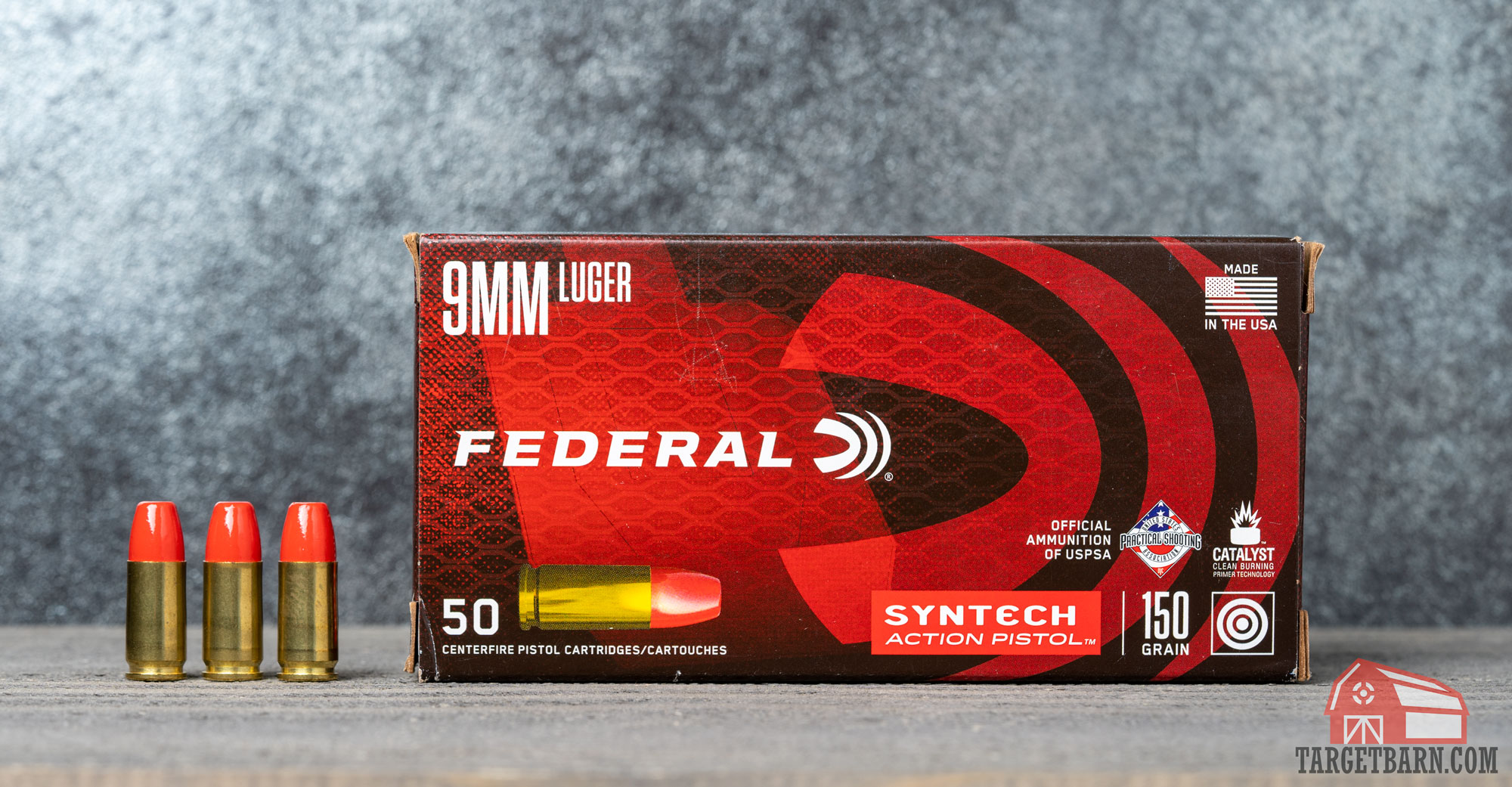
Use type: range training, competition
Unlike FMJ bullets which have a copper jacket, Total Synthetic Jacket bullets use a red polymer coating that covers the lead bullet. This polymer coating prevents metal on metal contact as the bullet travels through the barrel, resulting in reduced friction and fouling of the barrel.
The TSJ bullet is popular thanks to the Federal Syntech line of ammo. The Federal Syntech Action Pistol 9mm 150gr. is a top-seller for competition shooters due to its accuracy and clean-shooting properties.
Types of Bullets: Final Thoughts
It’s important to buy ammo that is suited for what you want to use it for. You wouldn’t want to use full metal jacket rounds for self defense and it would be very expensive to use jacketed hollow point rounds for plinking at the range.
No matter what type of bullet you choose, know you can load up with ammo that suits your needs here at Target Barn!

